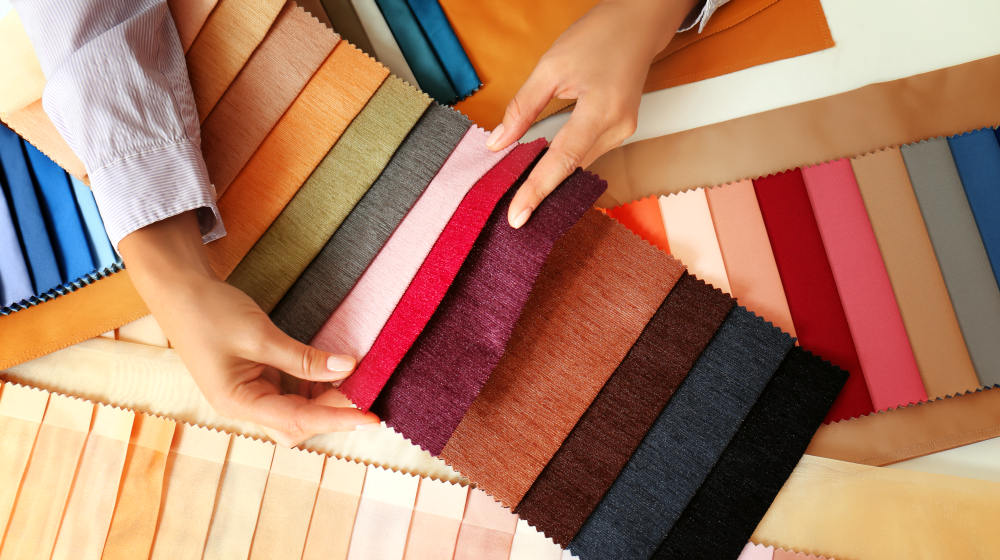
Textiles and fabric are often regarded as an afterthought, especially when it comes to interior designing. However, realistically speaking, it is impossible to design a house’s interior without them aptly. One of the major questions that people often ask themselves about interior designs, fabrics, and textile is where they can source them and find quality items. By looking at online reviews, one can identify reputable companies offering quality textile and fabrics. Reading home decor companies reviews, and I saw it first clothing can be very helpful. This article helps one understand more about textile and fabrics in interior design.
Textile Vs. Fabric
Textile and fabric are two terms that are interchangeably used; however, there are subtle variances between the two.
Textiles are usually made through weaving. They also be made using other methods such as tufting, knitting and felting. There are various materials from which textiles are formed including polymer, plastics, filaments and fibres. Textiles are used for various purposes, including window shades, wall coverings, carpeting, and walk-off mats. Some architectural uses of textiles include tensile fabrics, tenting and canopies.
On the other hand, fabrics are made of manmade or natural fibres that are crocheted, knitted, woven or bonded together to make a cloth. While fabric is a category of textile, not all textiles are fabric. Fabric are used for various purposes, and in commercial design, they are used for linens, Upholstery, bedding and drapery.
Uses of textile in a house’s interior
Below are how you can use textile to ensure a beautiful house interior.
Layer textures
Textiles help add visual interest to space, especially when you incorporate textile with an assortment of textures in an area. Ensure that you match and mix various textures in the room to create multiple effects.
Use textiles as an inspiration
Textiles may help offer a sense of inspiration to your space, offering a colour palette which helps build the room’s atmosphere.
Combine patterns not colours
While a room has lots of colours mixed, it can seem confusing and hectic. Always ensure you stick to a minimal range of colours and ensure the colours you choose aren’t boring. Mix a variety of textile patterns to enhance the looks of rooms. Within the colour palette, choose to use many solids and patterns.
Fabrics
Fabrics can either be made from synthetic or natural fibres.
Natural fibres
Natural fibres can either be plant or animal-based. They consist of silk, leather, linen, cotton, wool, hemp, jute and ramie. Some of the characteristics that natural fibre exhibit include; it is durable, biodegradable and is sustainable.
Leather
Leather is typically produced from animal hides. Animal skins from pigs, sheep, horses, cattle and skins of other animals are detached and preserved to start the process of tanning. Tanning is a process that involves the processing, cleaning, finishing and conditioning of the hides for use. All commercial-grade leather must go through the tanning process. Leather is characteristically durable, easy to clean and is hypoallergenic. It is, however, expensive. The fact that the size of the animal limits the hide’s size makes leather to be sold on a square foot basis. Other shortcomings of leather include it is susceptible to fading, cracking and thinning. The surrounding temperature greatly influences the temperature of the surface of leather, and thus it is unable to endure direct sunlight for long.
Cotton
This is the fabric that is used mostly in commercial design. The boll of the cotton plant is used to make the cotton fibre. After harvesting of the fibre, it is processed and then prepared into yards. This is then used to make various products, including rugs, wall coverings, upholstery fabric backing, draperies and lampshades. Characteristically cotton fibres are durable, soft, flexible and strong. Due to its porous nature, cotton can take dyes easily; however, the colour washes out easily. It is also breathable due to its porous nature. It is important to note that insects such as worms and moths can feed on cotton fibres, and thus cotton is susceptible to damage by insects. Other shortcomings of cotton include degrading and fading when exposed to prolonged periods of sunlight. When cotton is blended with fibres, its flaws are greatly overcome.
Silk
The silkworm makes silk. When this moth is in its pupa stage to makes a cocoon made of one strand of silk with a length of about 1000 feet. After the silkworm has made the cocoon, the cocoon is steamed, heated or boiled to kill the pupa in it. This process helps prevent the moth from developing and abolishing the single strand of silk. The cocoon that remains is softened and then unknotted to come up with silk fibre. Characteristically silk is soft, shiny and with a natural lustre. It is also expensive and delicate.
In conclusion, with this article, one can appreciate textile and fabric, where they come from and the process of making them.